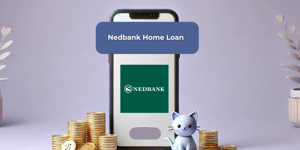
In 2025, financial pressure is a pervasive reality for millions of Americans, with two-thirds reporting moderate to high levels of stress. Rising costs of living, the aftermath of inflation, and a record credit card debt of $1.14 trillion create a challenging economic landscape. But with deliberate planning and informed choices, it is possible to regain control. This article offers a roadmap to reduce anxiety, build resilience, and embark on a journey toward lasting financial peace of mind.
The average household debt soared to $104,215 in 2023, up 11% since 2020. Everyday expenses like groceries, healthcare, and utilities compound this burden, while nearly half of Americans cite inflation as a primary stressor. For many, juggling multiple high-interest balances feels like running on a treadmill—effortful and going nowhere.
Surveys reveal that 73% of workers can barely afford costs beyond essentials, and 30% have taken on debt just to cover basic necessities. This environment fosters soaring household debt burdens and persistent and overwhelming financial anxiety, threatening both economic security and personal well-being.
Debt does not live in a vacuum; it seeps into every corner of life. Individuals carrying balances are three times more likely to experience depression, anxiety, and chronic stress. A staggering 52% of people with credit card interest report ongoing tension, while auto loans and student loans trigger stress in 36% and 39% of borrowers, respectively.
Medical debt can be especially paralyzing, with one-third of adults delaying mental health care due to cost concerns. Recognizing this connection is the first step toward healing. By addressing financial strain proactively, individuals can prevent the slide into crippling emotional strain and worry.
Effective payment planning starts with organization and strategy. By listing debts by interest rate or balance, you can choose a clear path forward. Two popular approaches—the snowball and avalanche methods—offer different advantages. The snowball method emphasizes quick wins by tackling the smallest balance first, while the avalanche method directs extra funds toward the highest interest rate.
When negotiating, always secure written agreements and verify that terms are clear. Consolidation can lower monthly bills, but guard against extending repayment over too many years, which could increase total cost in the long run.
Relying solely on repayment strategies is not enough. Cultivating healthy money habits creates a resilient financial ecosystem. A detailed, realistic budget is the foundation of every plan, tracking income and classifying spending into needs, wants, and savings. Setting aside funds before allocating for bills transforms saving into a priority, not an afterthought.
These consistent habits help avoid future setbacks and preserve mental calm, even when unexpected costs arise. By reinforcing discipline today, you build a buffer against tomorrow’s uncertainties.
Financial uncertainty often stems from a lack of guidance. Fortunately, a wealth of resources can fill the knowledge gap. Many employers now offer workshops and student loan repayment assistance, helping employees evaluate options. Seeking counsel from certified financial planners or nonprofit credit counselors can also shed light on personalized solutions.
For student loan borrowers, income-driven repayment programs cap payments at 10–20% of discretionary income. These plans offer income-driven repayment programs for flexibility and can reduce monthly obligations when income fluctuates. Exploring online courses, community seminars, and trusted articles can transform confusion into confidence, equipping individuals to make informed choices.
While economic pressures persist, proactive planning empowers you to steer your financial journey rather than be swept away by rising tides. Start today by listing obligations, selecting a repayment method, and introducing one new habit. As momentum builds, pay attention to your mental health and enlist support when needed. Each intentional step brings you closer to lasting financial peace of mind.
By combining strategic repayment, disciplined habits, and ongoing education, you can escape the cycle of anxiety and embrace a future defined by stability, freedom, and hope. The path may require patience and persistence, but the destination—a life free from crippling debt stress—is unquestionably worth the effort.
References













